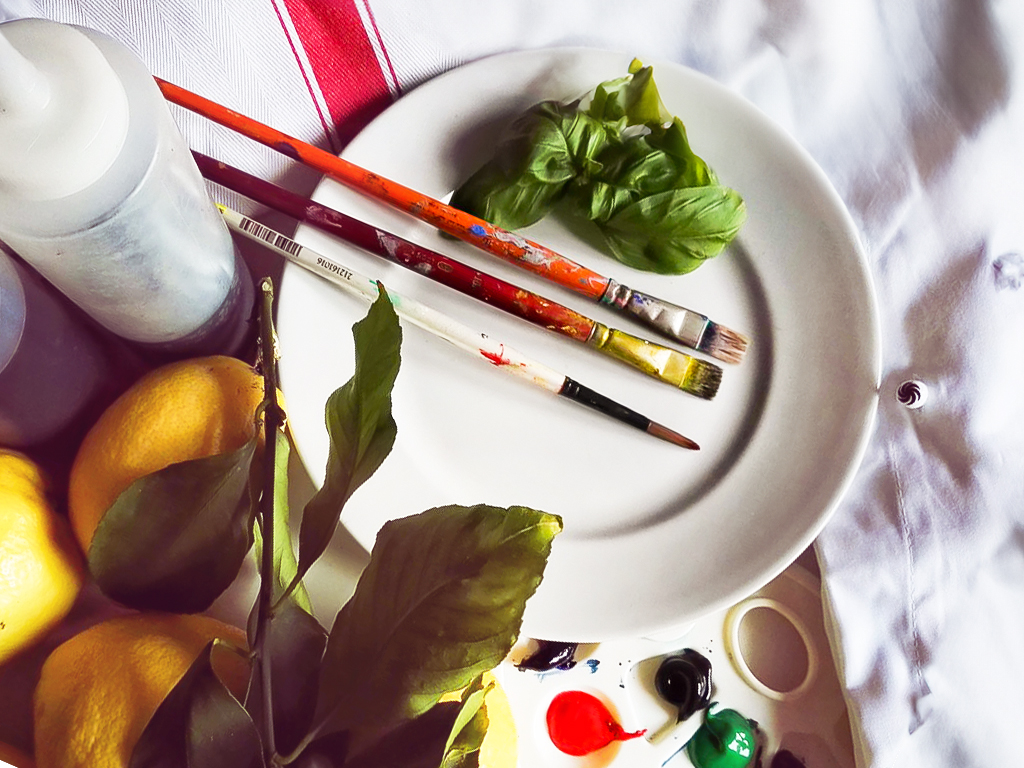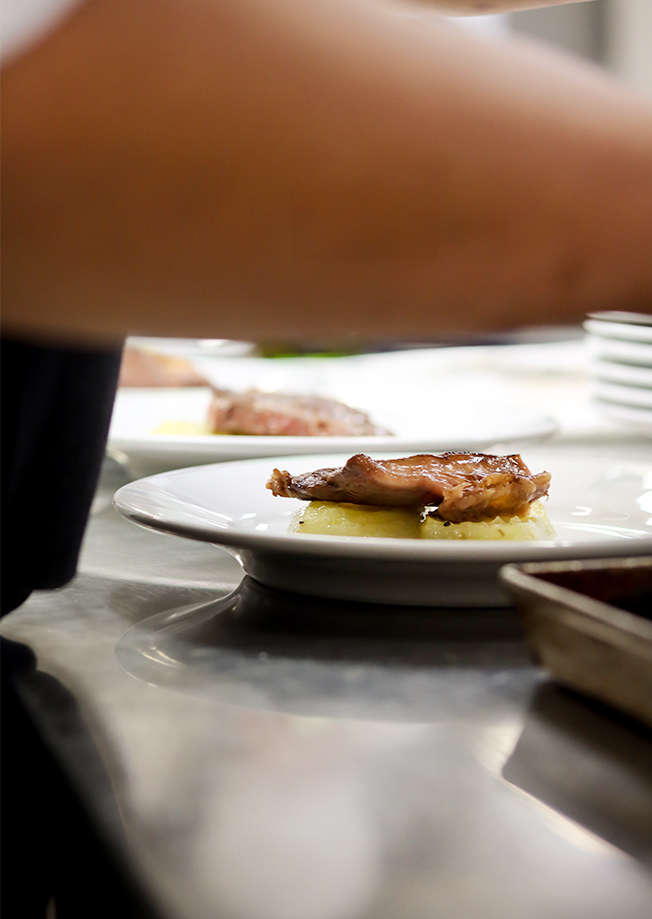L’attenzione accordata dall’alta cucina contemporanea alle esigenze scenografiche della presentazione conduce di necessità a riconsiderare le mansioni del cuoco e anche le tipologie del vasellame.
Un corniciaio esperto può suggerire la scelta di una cornice che meglio si addice a un dipinto, un buon venditore di colori può consigliare l’acquisto di pennelli, di tinte inalterabili, di tele preparate col miglior lino del Belgio.
Un calderaio, qual io sono anche se umanista, può sicuramente indicare al cuoco quali siano i piatti di porcellana, prodotti col miglior caolino, più adatti a ricevere le sue geniali preparazioni gastronomiche.
In effetti, se oggi si preferisce far uso di piatti privi di fregi e di motivi ornamentali, è proprio perché la funzione del recipiente è assimilabile a quella della tela bianca in pittura: il bordo o fascia del piatto rappresenta una separazione tra la creazione del cuoco e il mondo che lo circonda ( tovaglia, bicchieri, posate ecc.), con una funzione assimilabile a quella anonima del passepartout: infatti la semplice colorazione del bordo del piatto influirebbe sull’effetto cromatico della presentazione alimentare, precludendole o condizionandole l’equilibrio complessivo.
Si concede così grande libertà alle immagini fotografiche del cibo, perché oggi la haute cuisine assume a modello di emulazione il sistema della haute couture.
Nella rappresentazione iconografica delle vivande esiste un fattore che recita una parte di grande rilevanza, ed è la proporzione tra la pietanza e la parte interna del piatto, il girello, che accoglie i cibi e ne definisce le possibilità combinatorie.


L’immagine della tela suggerisce al riguardo un paragone ulteriore: come una tela di grandi dimensioni esige un soggetto di presenza adeguata, così pure la superficie utile del piatto e la stazza degli alimenti debbono obbedire al medesimo criterio di proporzionalità.
Questi principi non sono certo nati oggi se già nel Manifesto della cucina futurista del 1930, Filippo Tomaso Marinetti suggeriva al cuoco provetto di “ arrivare a concepire per ogni vivanda un’architettura originale in modo che tutte le persone abbiano la tentazione di mangiare, oltre che dei buoni cibi, anche delle opere d’arte e di prefigurare un’armonia nell’addobbo della tavola coi sapori e colori delle vivande”.
La disposizione scenografica del cibo è oggi concepita in modo esemplare con il servizio sul piatto individuale, dove la bellezza degli spazi vuoti è uno strumento espressivo e non è tuttavia un esercizio formale fine a se stesso, poiché dipende dalle proporzioni tra recipiente, spazio occupato dal cibo e spazi vuoti che variano infatti a seconda della stagione, del cibo e del colore del vasellame.
Per concludere, poiché le tecniche dell’imbandigione non sono mai disgiunte da quelle culinarie, le varie soluzioni si configurano come il risultato di accorgimenti e di scelte che intervengono nella preparazione delle pietanze, poiché l’innovazione scenografica è sempre l’effetto finale di un discorso gastronomico anteriore che le fornisce l’occasione e il presupposto.
Eugenio Medagliani calderaio umanista
